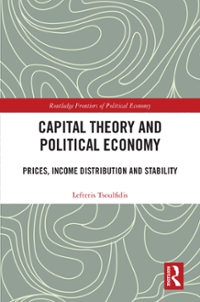Question
4. Suppose that a computer costs 5,000 pesos in Mexico but that the same computer costs $500 in the United States. Currently the exchange rate
4. Suppose that a computer costs 5,000 pesos in Mexico but that the same computer costs $500 in the United States. Currently the exchange rate is 1 dollar = 20 pesos. Assuming that there are no tariffs, no taxes, no transport costs, or other restrictions of any kind, according to the Purchasing Power Parity Theoryfrom where will Americans buy computers (Mexico or the US)? Given this, what will be the impact on the exchange rate between dollars and pesos? What will the exchange rate be in the long run according to PPPT assuming computers continue to cost 5,000 pesos and $500 (of course in this simple theory we are assuming a lot)?
5. Who benefits from a "strong" (i.e. appreciating) dollar? Who benefits from a "weak" (i.e. depreciating) dollar? Let's consider a STRONG dollar. Other factors constant how will this impact:
a) US Exports to other countries b) US Imports from other countries c) US Employment d) the well-being of a US tourist going overseas e) the well-being of a US business (say in New York City) that relies heavily on business from foreign tourists?
Step by Step Solution
There are 3 Steps involved in it
Step: 1

Get Instant Access to Expert-Tailored Solutions
See step-by-step solutions with expert insights and AI powered tools for academic success
Step: 2

Step: 3

Ace Your Homework with AI
Get the answers you need in no time with our AI-driven, step-by-step assistance
Get Started


